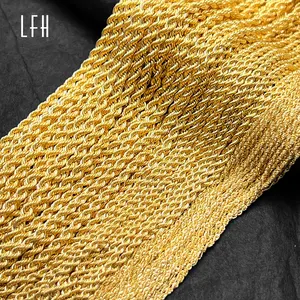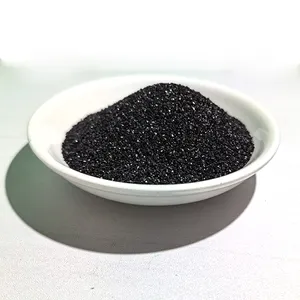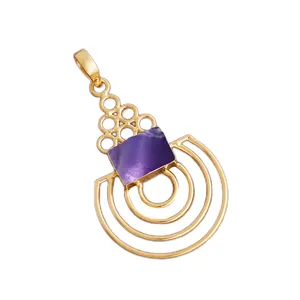The expression raw gold refers to various unprocessed forms of the precious metal, typically encountered in the wild. This element may manifest as raw gold in quartz, raw gold in rock, or as solitary specimens like a raw gold nugget or gold nugget raw. Such forms are coveted for their inherent allure and the prospect of refining them into pure gold. Alibaba.com offers an extensive array of raw gold offerings, serving the needs of enterprises and craftsmen in pursuit of this unspoiled bounty for assorted uses.
Types and Characteristics of Raw Gold
Raw gold appears in a multitude of distinctive forms. Raw gold in quartz presents a mesmerizing amalgamation where the metal is naturally encased in quartz stone, providing a stark juxtaposition. Raw gold nuggets are naturally occurring fragments of gold, often exhibiting a singular, irregular contour. Raw unprocessed gold and rough gold denote gold in its unrefined state, displaying the element's innate purity and texture. These varieties are prized in their unaltered form by both collectors and jewelry makers. The charm of raw natural gold stems from its diversity, ranging from fine flakes to grand nuggets, each with its distinct shape, size, and sheen, thus offering a spectrum of choices for diverse commercial needs. The characteristics of these raw gold types are as varied as their visual aspects, with some pieces exuding the sleek, buffed appearance of river-polished nuggets, while others exhibit the rugged, serrated edges of gold freshly hewn from the stone.
Structure and Composition of Raw Gold
The structure of raw gold is intrinsically tied to its geological genesis. Gold deposits commonly reside within rock strata, with raw gold in rock being retrieved via mining endeavors. The physical makeup of raw gold items, such as raw gold nuggets or gold nugget raw, can differ markedly. Each specimen may bear traces of other minerals or be conjoined with various rock types, influencing both its aesthetic and worth. The procedure of isolating gold from these substances is a meticulous task, aimed at preserving the gold's pristine condition while eliminating foreign matter. The composition of raw gold may also encompass a mix of other elements, like silver or copper, which can alter the hue and melting threshold of the gold. Comprehending the structure and composition is crucial for those engaged in the trade of refining or evaluating raw gold.
Materials and Properties of Raw Gold
The materials that make up raw gold products are primarily the gold itself, often accompanied by traces of other minerals. The properties of raw gold in quartz, for instance, include the quartz's hardness, which acts as a robust encasement for the more malleable gold. Opting to retain gold in its raw state, such as raw gold nuggets or raw natural gold, is frequently due to the aesthetic and inherent worth these materials offer. The advantages of these materials are manifold, spanning their historical and cultural importance to their allure in crafting jewelry and ornamental objects. The fineness of raw gold is typically denoted in karats, with the apex of quality being 24 karats, signifying unalloyed gold.
Business Usages and Applications of Raw Gold
Raw gold is utilized across a breadth of sectors. In the realm of jewelry crafting, raw gold nuggets and raw gold in quartz are frequently employed to forge distinctive adornments celebrated for their organic splendor. Within the electronics sphere, gold's conductive attributes render raw unprocessed gold a prized element for premium connectors and circuitry. Moreover, raw natural gold is incorporated into investment portfolios, where firms acquire gold as a bulwark against inflation and fiscal volatility. These applications generate considerable commercial value, as raw gold is not merely a raw material but also an objet d'art and an economic stabilizer. In interior design, raw gold can be fashioned into exquisite, opulent embellishments that introduce an element of sophistication to any environment.
Functions of Raw Gold
The principal role of raw gold is to act as a foundational substance that can be transformed into a variety of forms. Nonetheless, raw gold in quartz and raw gold nuggets also fulfill an aesthetic purpose in their untouched state, often utilized in decorative and artistic endeavors. The function of raw gold extends beyond mere ornamentation, as it is pivotal in technological and industrial domains due to its supreme malleability, conductivity, and resistance to tarnishing. This renders raw gold an essential commodity in industries demanding the utmost in quality and performance.
Features of Raw Gold
The defining features of raw gold encompass its innate sheen and coloration, which can span from a pale yellow to a deep, resplendent gold. The unique selling propositions of raw gold in rock or raw gold nugget lie in their pristine condition and scarcity. Contrary to processed gold, the raw variant retains the original textures and silhouettes that occur naturally, rendering each piece singular. These attributes distinguish raw gold from its competitors, offering a genuine and unmodified product that is increasingly esteemed in a marketplace that values natural and eco-conscious materials. The density and substantiality of raw gold also contribute to its uniqueness, as it possesses a heft that is noticeably greater than most other minerals of comparable size.
Benefits of Raw Gold
The advantages of raw gold are plentiful. For enterprises, the allure of raw gold nuggets or raw gold in quartz resides in their distinctive aesthetic, which can captivate clientele in search of originality. Incorporating raw natural gold into products can also amplify the perceived value and allure of the goods. For investors, the merit of raw gold lies in its lasting worth and the equilibrium it can introduce to an investment collection. Additionally, the eco-friendly aspect of employing raw unprocessed gold resonates with a market increasingly concerned with sustainable practices. The unrefined state of gold also simplifies authentication compared to processed gold, which typically necessitates intricate assays.
How to Identify Quality Raw Gold
Discerning high-caliber raw gold entails scrutinizing its hue, texture, and heft. Natural raw gold typically exhibits a distinctive yellow tint and a substantial feel. When evaluating raw gold in quartz, the visibility and abundance of gold are pivotal considerations. For those keen on buying raw gold, grasping these quality indicators is essential for informed procurement decisions. The presence of specific marks or imperfections can also signal the genuineness of raw gold, as authentic gold will display a certain pliability and luster that is challenging to counterfeit.
How is Raw Gold Priced?
The raw gold price is swayed by international gold markets and its fineness. The price of raw gold today may oscillate in response to economic dynamics. For businesses, it is imperative to comprehend the elements that influence the raw gold price per gram or raw gold price per ounce to strategize effectively for procurement or divestment. The valuation of raw gold also accounts for the costs associated with extraction, refinement, and the potential for future value appreciation.
How to Incorporate Raw Gold into Jewelry Design?
Blending raw gold into jewelry design demands an inventive touch. Designers might spotlight raw gold nuggets or raw gold quartz as central elements in their creations. The inherent elegance of raw gold in rock can be accentuated with harmonizing materials, yielding singular and coveted jewelry pieces that shine in the commercial landscape. The integration of raw gold into jewelry also necessitates careful contemplation of the metal's characteristics, such as its pliability and interaction with other substances, to ensure the end product is not only aesthetically pleasing but also enduring and practical for wear.








































 浙公网安备 33010002000092号
浙公网安备 33010002000092号 浙B2-20120091-4
浙B2-20120091-4